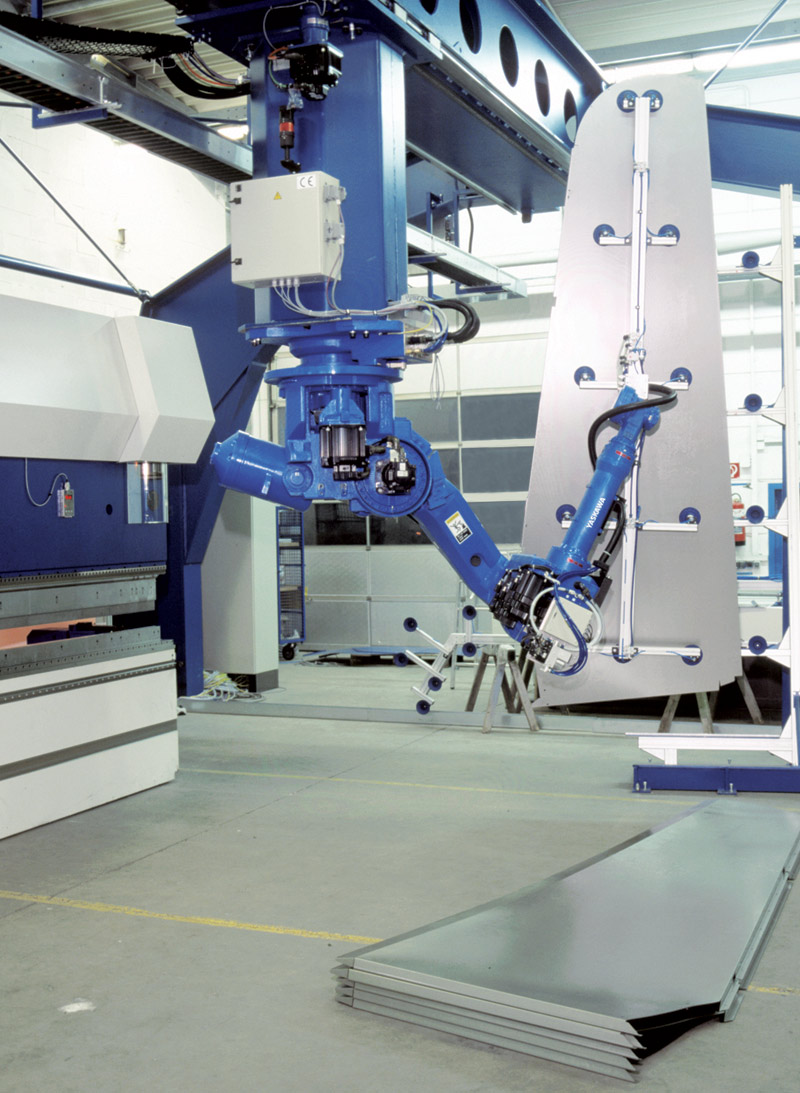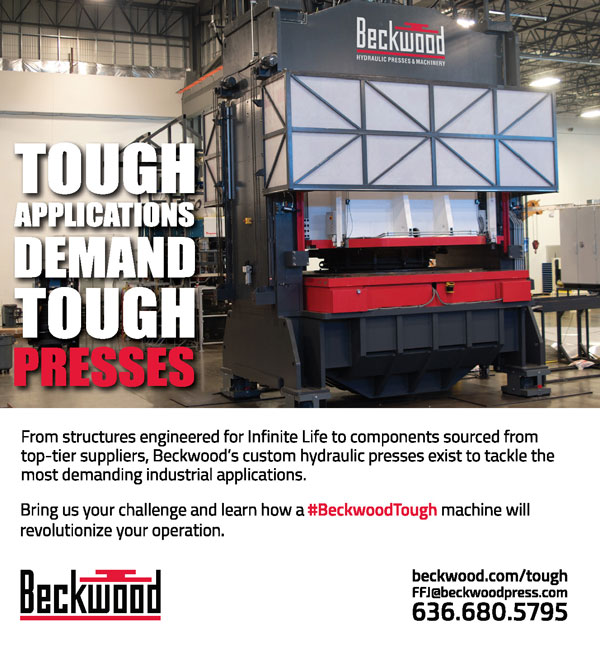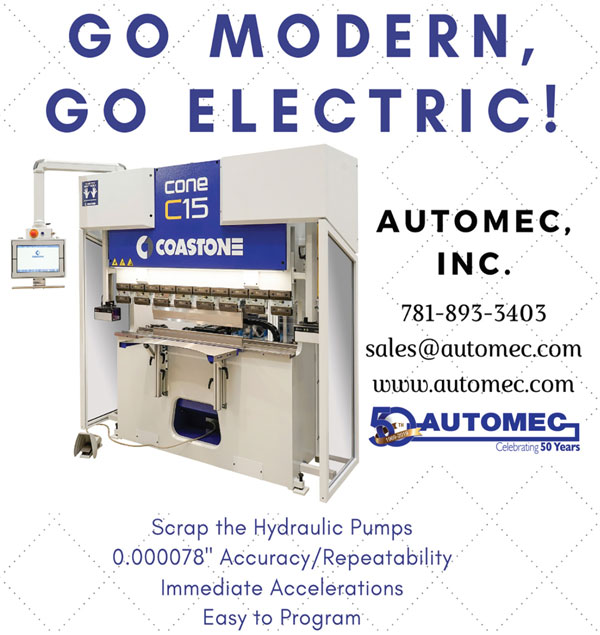evitalizing production in the evolving post-COVID market is a common reality most manufacturers must face. Decision-makers are discovering that the use of high-performance press-tending robots can provide the robust ROI needed to make the leap to robot automation worthwhile.
The robot must work within press cycle times to avoid slowing down strokes per minute. Robot selection also depends on if the part must be reoriented as it is transferred. The ability to tilt a part back and forth, or rotate it between processes, often requires the dexterity of a 6-axis robot. Less complex operations may allow for less costly 4- or 5-axis robots.

Parts must be disposed of correctly at the end of the line. Loading finished parts into engineered part-specific racks, bins or pallets is key. Normally, modular vacuum grippers unload parts from the final stamping process and place parts onto a rack. A part may not be placed into a stationary rack immediately. Instead, the part is ejected from the last die. As a result, the high-speed conveyor or shuttle can transport it to a racking or palletizing station where a robot will move the part onto a pallet or onto a rack.
If using a racking or palletizing station, it is important to remember the pallet or rack is most likely going to be removed by a lift truck operator, so it is a good idea to use robust locators with pallet- or rack-present sensors that are mounted to the shop floor, providing the utmost protection to the pallets or racks.

Given today’s labor shortages and throughput rates, robots are a solid option for many press-tending applications, reducing potential injuries and unnecessary downtime while lowering scrap and increasing production throughput.


